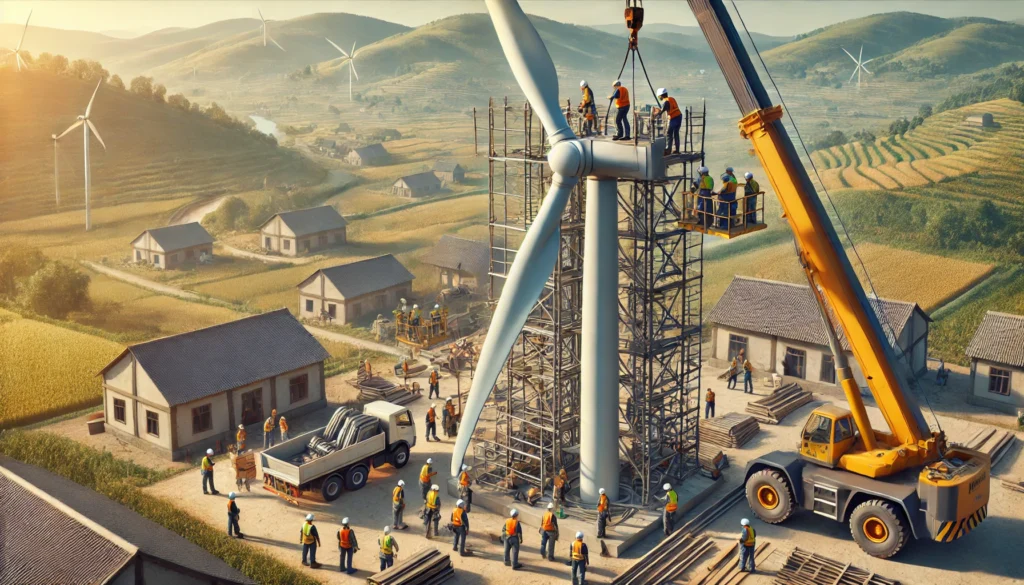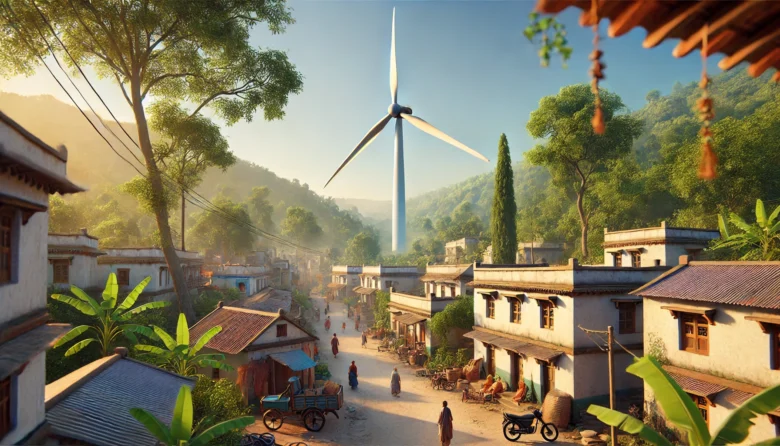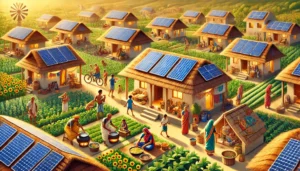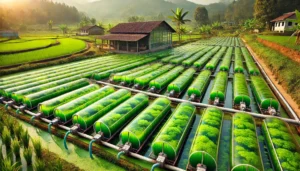In the quest for sustainable energy, community wind power projects have emerged as a promising solution. By harnessing the power of the wind, these localized initiatives are providing renewable energy to communities across India. This blog will explore the benefits, implementation, and potential of community wind power projects, making it clear why they are an essential part of our renewable energy future.
Introduction
India, with its vast landscapes and diverse weather patterns, is an ideal candidate for wind power. The concept of community wind power projects brings the benefits of renewable energy directly to local communities. These projects involve the collective effort of a community to establish and manage wind turbines, generate clean electricity, and foster energy independence. In this blog, we will delve into the importance of community wind power projects, their benefits, and how they can be implemented in India.
What Are Community Wind Power Projects?
Community wind power projects are localized energy solutions where a group of people, often within a village or town, collaborate to develop and operate wind turbines. The locally generated electricity decreases dependence on conventional power sources and cuts down carbon emissions. These projects can be owned and managed by community members, cooperatives, or local governments, ensuring that the benefits remain within the community.
How Do Community Wind Power Projects Work?
Site Selection: Identifying suitable locations with adequate wind resources is the first step. This involves wind speed measurements and environmental assessments.
Funding and Ownership: Community wind projects are typically funded through a mix of community investments, government grants, and loans. Ownership models can vary, but community participation is key.
Construction and Operation: Once funding is secured, construction of wind turbines begins. After installation, the turbines are maintained by local teams or in partnership with specialized companies.

Benefits of Community Wind Power Projects
Energy Independence
Community wind power projects offer a dependable energy source, decreasing reliance on fossil fuels and external electricity providers. This is particularly beneficial for remote and rural areas where power supply can be inconsistent.
Environmental Impact
By using wind power, communities can significantly reduce their carbon footprint. Wind power is a clean and renewable energy source, which means it doesn’t emit greenhouse gases or other pollutants.
Economic Benefits
Local Jobs: The construction, operation, and maintenance of wind turbines create jobs within the community.
Revenue Generation: Surplus electricity can be sold to the grid, generating revenue for the community.
Cost Savings: Lower energy costs for residents and local businesses, as wind power is often cheaper than conventional electricity.
Community Empowerment
Ownership of wind power projects fosters a sense of pride and responsibility among community members. It also encourages the participation of local people in decision-making processes related to energy production and use.
Implementing Community Wind Power Projects in India
Government Support
The Indian government has introduced several policies and incentives to promote renewable energy. Programs like the National Wind-Solar Hybrid Policy and subsidies for renewable energy projects provide financial and technical support to communities.
Case Studies
Gujarat: Known for its progressive renewable energy initiatives, Gujarat has successfully implemented community wind power projects that provide electricity to remote villages.
Tamil Nadu: With favorable wind conditions, Tamil Nadu has several community-based wind projects that have transformed local energy landscapes.
Challenges and Solutions
Funding: Securing initial investment can be challenging. Community wind projects can explore crowdfunding, government grants, and partnerships with private companies.
Technical Expertise: Lack of technical knowledge can hinder project implementation. Training programs and partnerships with technical institutions can address this issue.
Regulatory Hurdles: Navigating regulatory requirements can be complex. Engaging with local authorities and seeking guidance from experienced organizations can facilitate smoother project development.
The Future of Community Wind Power in India
Technological Advancements
Advances in wind turbine technology, such as more efficient blades and better energy storage solutions, are making wind power more viable and cost-effective. These advancements can further boost the adoption of community wind projects.
Increasing Community Participation
As awareness about renewable energy grows, more communities are likely to embrace wind power projects. Educating the public about the benefits and feasibility of these projects is crucial for their widespread adoption.
Policy and Regulatory Support
Ongoing government backing and supportive policies will be crucial for the growth of community wind power projects. Simplifying regulatory processes and providing financial incentives can encourage more communities to take up these projects.
Conclusion
Community wind power projects represent a significant step towards sustainable and localized energy solutions in India. By utilizing wind energy, communities can gain energy independence, lessen their environmental footprint, and enhance local economies. The future of community wind power in India looks promising, with increasing support from the government, technological advancements, and growing community participation. Together, we can pave the way for a cleaner, greener, and more sustainable energy future.
Author’s Note
As someone deeply passionate about renewable energy, I believe that community-driven initiatives are key to achieving sustainable development. Community wind power projects not only provide clean energy but also empower local communities, creating a win-win situation for everyone involved. Let’s support and promote these projects for a brighter future.
G.C., Ecosociosphere contributor.



